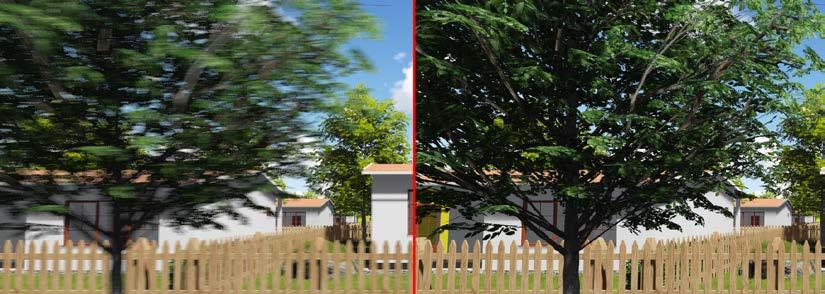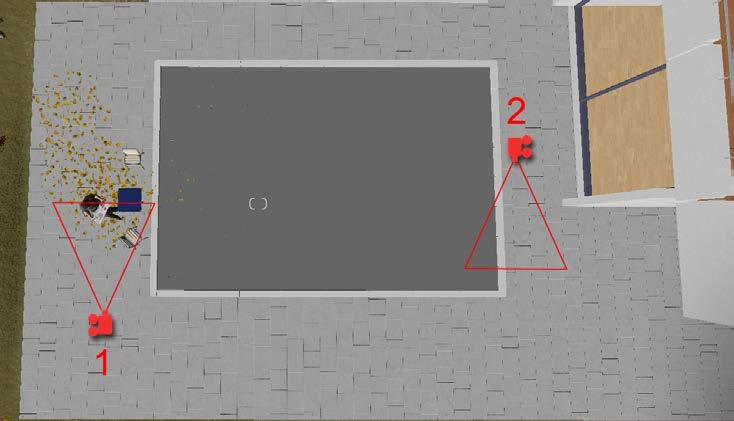
3 minute read
Importing and Handling 3D
by TD Garden
Models
The complete collection of Lumion's features and their usability would be useless if we didn't have the capability to import our 3D models in Lumion. In the previous chapter under the section What is necessary to work with Lumion, we provided a list of all the file formats that Lumion can recognize and read. So, not only can Lumion import a wide variety of file formats, but it also has a good system to reload 3D models without losing the information attached to them, and by information we mean the materials assigned to the 3D models and their location. This is an important and crucial step in the entire workflow pipeline so let's have a look at what you are going to learn in this chapter:
Advertisement
• How to import 3D models
• Importing directly from SketchUp
• Importing 3d models from 3ds Max or another application using COLLADA or FBX
• Importing animations to Lumion
• Common problems and how to solve them
• Beginners' mistakes
• How to place 3D models in Lumion
• Randomness while placing objects
• The Mass Placement tool
• Controlling the 3D models
• Difference between model categories
• Importing large scenes
• Reloading imported files
Importing and Handling 3D Models
As mentioned, importing 3D models is a crucial step because it allows you to check whether the 3D model has any geometrical problem that needs to be solved. Most of the time, if you use the COLLADA or FBX format, everything will work properly but you will still have some issues that cannot be easily spotted while modeling. Nevertheless, before we jump to such a technical section, let's see how we can import 3D models exported from several applications.
If you prefer working on the landscape first, in case of an exterior scene have a look at Chapter 4, Creating an Exterior Scene with Lumion. There you can learn everything you need to know to sculpt and tweak the terrain to your needs.
Importing 3D models
When Lumion opens a new scene or loads a scene, the Objects menu is opened by default. This menu is what you have to use to and to start importing a 3D model, which you can import by clicking on the Import button and then selecting the Add a new model button, as shown in the following screenshot:
This screenshot provides some useful practices that you can apply from the beginning of your project. From the start, Lumion lets you rename the 3D model you are importing. This is really useful for the reason that you will probably import different versions of the same 3D model, particularly while working on a concept stage. This is also where you can decide to import simple animations along with the 3D model. As a best practice, you should start renaming and using layers from the start of your project.
As soon you click on the Add to library button, the place tool becomes available to start placing 3D models, which you can place by clicking on with the left mouse button. These models you import are stored in the Import Library button that you can access by clicking on the thumbnail above the Place object button. Here, you have the opportunity to delete or add the 3D model to a special category called Favorites
With time, you will import tons of 3D models that can be used in different scenes. The Import Library button is shared between scenes, so make good use of the Toggle Favorite option to select all those 3D models, such as trees and furniture, which you can easily recycle in different scenes.
Now that you know how to import a 3D model to Lumion, we we will cover not only how to import SketchUp files directly, but also how to import FBX and COLLADA files.
Importing SketchUp files
One of the greatest practices to work with Lumion is to use SketchUp for modeling and applying a basic texture. Firstly, SketchUp has a free version with a few limitations and is simple to use, and secondly Lumion can read SketchUp files. It may not seem important, but this feature simplifies your workflow by cutting out the middlemen. With SketchUp, you simply save the scene, import it into Lumion, and if necessary hit the Reload button to reimport the 3D model with the changes.
Lumion may give you an error when you try to import a SketchUp file, but this is due to the fact that Lumion may not support some newer SketchUp versions. However, don't worry, as you can always "down save" a model to an older version.
Really, this is as simple as it can get. You may encounter some issues while importing SketchUp files which are common to all the formats and that is something we will see later in this chapter. For now, let's see two formats that work great in Lumion.






